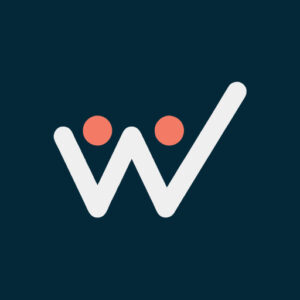Culture Has Gone Borderless
The leadership tech stack is now a non-negotiable in the modern workplace. Remote and hybrid work aren’t fringe benefits anymore—they’re the new foundation of how we operate. As of 2025, nearly 40% of U.S. jobs support some form of remote work, and fully remote roles have tripled since 2020. Globally, more than half of all employees prefer hybrid schedules, while only about one in five still want to be in the office five days a week.
For today’s leaders, this shift brings both freedom and friction. Gone are the spontaneous hallway chats, desk drive-bys, and casual connections that once helped shape team dynamics. In their place? Zoom fatigue, overflowing inboxes, and culture that can feel fragmented—unless leadership is intentional and supported by the right systems.
That’s where a strong leadership tech stack comes in. It’s not just a set of digital tools—it’s the backbone of modern management. When thoughtfully built, your leadership tech stack enables you to build, reinforce, and scale culture across time zones, departments, and workstyles.
By investing in a leadership tech stack, organizations empower managers to lead with greater clarity, recognition, and insight—no matter where their teams are logging in from. In today’s distributed world, your culture only scales as well as your systems do—and that starts with the right tech stack in place.
1. Why Culture Still Wins—Even When You’re Not in the Same Room
A distributed workplace doesn’t reduce the need for culture—it increases it.
- Engaged teams perform better. Gallup research consistently shows that highly engaged teams are 21% more profitable, whether they’re co-located or fully remote.
- Trust becomes the currency of productivity. Remote employees who feel trusted by their manager are more likely to report higher output, stronger mental health, and lower burnout.
- Managers still matter—maybe more than ever. Even in a distributed model, 70% of employee engagement variance still ties back to the manager. Their influence just scales through screens now.
In short: if culture is what happens when no one is watching, remote culture is what happens when no one is in the same room—and leadership makes all the difference.
2. The New Friction Points for Distributed Leaders
Leaders in a hybrid or remote setting encounter a unique set of culture challenges. These include:
- Invisible Work: Contributions made behind the scenes or asynchronously can easily go unrecognized.
- Async Overload: Tools like Slack and email enable communication—but also overwhelm when expectations aren’t clear.
- Recognition Gaps: Without physical presence, the small wins often go uncelebrated.
- Wellbeing Blind Spots: Subtle signs of burnout, disengagement, or loneliness can slip past unnoticed.
- Siloed Data: Insights about workload, engagement, and team health may be trapped in isolated apps.
If left unaddressed, these challenges erode culture and performance. But with the right stack—and the right mindset—leaders can turn friction into fuel.
3. People-Centric Leadership Principles for Distributed Teams
To lead effectively at scale, modern managers must adopt people-first principles that translate into everyday digital behaviors. Here’s how:
- Transparency over Presence
Openly share decisions, expectations, and context so no one feels out of the loop. Clear documentation beats “face time.” - Outcomes over Hours
Don’t judge performance by how long someone’s online. Focus on progress, ownership, and results. - Recognition in Real Time
Celebrate wins as they happen—even if it’s through a quick Slack shoutout or kudos badge. - Whole-Person Support
Acknowledge that employees are humans first. Prioritize mental health, physical wellness, and psychological safety. - Insight-Driven Leadership
Use real data—pulse surveys, feedback trends, workload reports—to coach and adapt, not just guess.
These principles are easy to understand—but hard to scale without the right tools.
4. Your Three-Layer Leadership Tech Stack
Think of your leadership tech stack like scaffolding that supports consistent culture, no matter where your people work.
Layer 1: Connection & Visibility
Goal: Keep everyone aligned, informed, and included.
- Async Hubs (e.g., Slack, Teams, Twist) – Enable real-time and asynchronous conversations that reduce Zoom fatigue.
- Digital HQs (e.g., Notion, Confluence, Coda) – Serve as a single source of truth for goals, updates, and knowledge-sharing.
- Recurring Video Rituals – Weekly standups or monthly AMAs (Ask Me Anythings) give teams a forum to connect and reflect.
- Team Charters – Written norms about how your team communicates, collaborates, and respects time zones.
Layer 2: Recognition & Wellbeing
Goal: Reinforce what matters and support employee energy.
- Peer-to-Peer Recognition – Platforms that allow employees to celebrate one another’s contributions in public spaces.
- Wellbeing Challenges – Group activities like step counts, gratitude journaling, or hydration tracking that foster fun and connection.
- AI Nudges – Reminders for managers to check in, recognize effort, or review feedback rhythms.
Layer 3: Insight & Adaptation
Goal: Turn employee experience data into better leadership decisions.
- Surveys – Short, frequent check-ins that track sentiment, trust, workload, and belonging.
- Sentiment Analysis – Natural language processing that pulls themes from survey comments and chat channels.
- Workload Dashboards – Visualize how stretched (or underused) different team members are.
- Engagement-Performance Links – Connect culture metrics (e.g., eNPS) with KPIs like project completion or customer satisfaction.
When these tools work in tandem, they create a loop: communicate → recognize → measure → improve.
5. From Chaos to Cohesion: How to Build Your Leadership Tech Stack
Implementing a leadership tech stack doesn’t have to feel overwhelming—for your people or your IT team. With a phased, intentional approach, you can build momentum, reduce resistance, and create long-term impact. Here’s a step-by-step guide to help you get started:
Step 1: Audit Your Existing Tools
Begin with a complete inventory of your current tools—especially those used for communication, task management, recognition, surveys, and collaboration.
Ask questions like:
- Which tools are actively used and add clear value?
- Which ones overlap, create confusion, or go unused?
From there, identify redundancies to eliminate and gaps to fill. This streamlining process will reduce tool fatigue, improve adoption, and help your team focus on what works.
Step 2: Define What Success Looks Like
Before choosing new tools, be clear about your goals. Identify two or three specific culture outcomes you want to influence—such as:
- Reduced voluntary turnover
- Higher eNPS or engagement scores
- Shorter time-to-productivity for new hires
Next, connect those outcomes to measurable business KPIs, like customer satisfaction (NPS), revenue per employee, or project delivery timelines.
This alignment helps you make a stronger case to executive stakeholders—and gives you a clear way to track return on investment over time.
Step 3: Prioritize Tools That Integrate
Now that you’ve set your goals, select tools that integrate well with your existing systems. Look for platforms with:
- Open APIs
- Built-in integrations
- Unified dashboards
This reduces siloed data, cuts down on manual work, and allows your tech stack to scale efficiently.
Pro tip: Start with a pilot team. Testing new tools in a single department allows you to gather feedback, fix early issues, and build proof of concept before expanding company-wide.
Step 4: Equip and Train Your Managers
No leadership tech stack is effective without strong adoption—and that starts with your managers. Provide bite-sized, hands-on training on how to:
- Give feedback asynchronously
- Use recognition tools meaningfully
- Support employee wellbeing in distributed settings
Also, offer managers practical resources like scripts, toolkits, and access to experienced mentors. These support systems create consistency and increase confidence across your leadership team.
Step 5: Launch in Phases and Iterate
Avoid the urge to roll everything out all at once. Instead, introduce your tools in stages—starting with connection and collaboration platforms, then layering in recognition and engagement insights.
Once live, collect feedback early and often. Use that input to tweak workflows, clarify expectations, and improve usability. Think of the first 30 to 90 days as a “learning launch”—and adjust accordingly.
Step 6: Celebrate and Share the Wins
Don’t let early wins go unnoticed. Publicly highlight the impact your leadership tech stack is already having. For example:
- Share how a recognition tool boosted morale
- Highlight reduced burnout flagged by a workload dashboard
- Celebrate teams that improved alignment through async updates
By spotlighting real results and giving visibility to managers leading the way, you build momentum and reinforce your culture’s most scalable behaviors.
6. Metrics That Matter (and What They Tell You)
Want proof your leadership stack is working? Track these:
- Engagement Score (e.g., eNPS): A strong signal of how connected employees feel to the company.
- Recognition Frequency: Especially from managers—aim for at least one meaningful moment per employee per month.
- Turnover Rate: Are voluntary exits declining, especially among top performers?
- Time-to-Clarity: How quickly new hires or project teams feel clear on goals and expectations.
Over time, you’ll see these metrics feed into outcomes like speed, creativity, retention, and brand loyalty.
7. Pitfalls to Avoid
Even with the best tools and intentions, common missteps can undermine your efforts. Here’s what to watch out for—and how to stay on track:
- Tool Sprawl – Don’t confuse more tools with better outcomes. An overly complex stack leads to confusion, fatigue, and reduced adoption. Instead, aim for simplicity, clarity, and seamless integration.
- One-Time Trainings – A single training session isn’t enough. Digital leadership is a skill that evolves, and managers need ongoing support. Provide quarterly refreshers and practical updates to help them adapt to changing needs.
- Micromanagement via Tech – Avoid the temptation to use digital tools for surveillance. Don’t replace in-person control with digital overreach. Focus on outcomes, trust, and autonomy—not tracking mouse movements or login times.
- Excluding Global Voices – Asynchronous work shouldn’t come at the cost of inclusion. Design workflows that respect time zones and allow every team member to contribute meaningfully, regardless of location.
- Data Without Follow-Through – Gathering feedback without acting on it erodes trust. A survey with no response is worse than no survey at all. Always close the loop by sharing what you learned—and what you plan to do next.
Conclusion: Leading at Scale Starts with Intentional Systems
Remote and hybrid work aren’t passing trends—they’re the reality of modern business. But scalable culture doesn’t happen by chance. It requires leaders to build systems that reinforce clarity, connection, recognition, and care at every level.
A thoughtful, well-integrated leadership tech stack is no longer optional. It’s the foundation of people-first leadership in a distributed world. When designed with intention and supported by training and data, it empowers managers to lead with confidence, consistency, and impact—regardless of where their teams sit.
A Note from Woliba
At Woliba, we created our platform to support today’s distributed leaders—from real-time recognition and wellbeing challenges to engagement insights and pulse analytics. Whether your team is fully remote, hybrid, or somewhere in between, we make it easy to connect the dots between culture and performance.
Ready to scale your culture with confidence?
Visit woliba.io to discover how we help distributed teams thrive.








